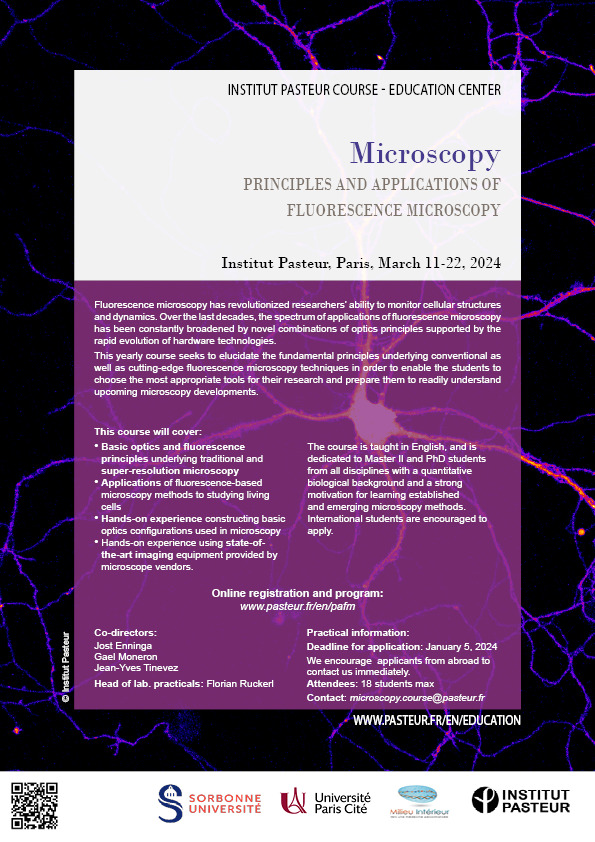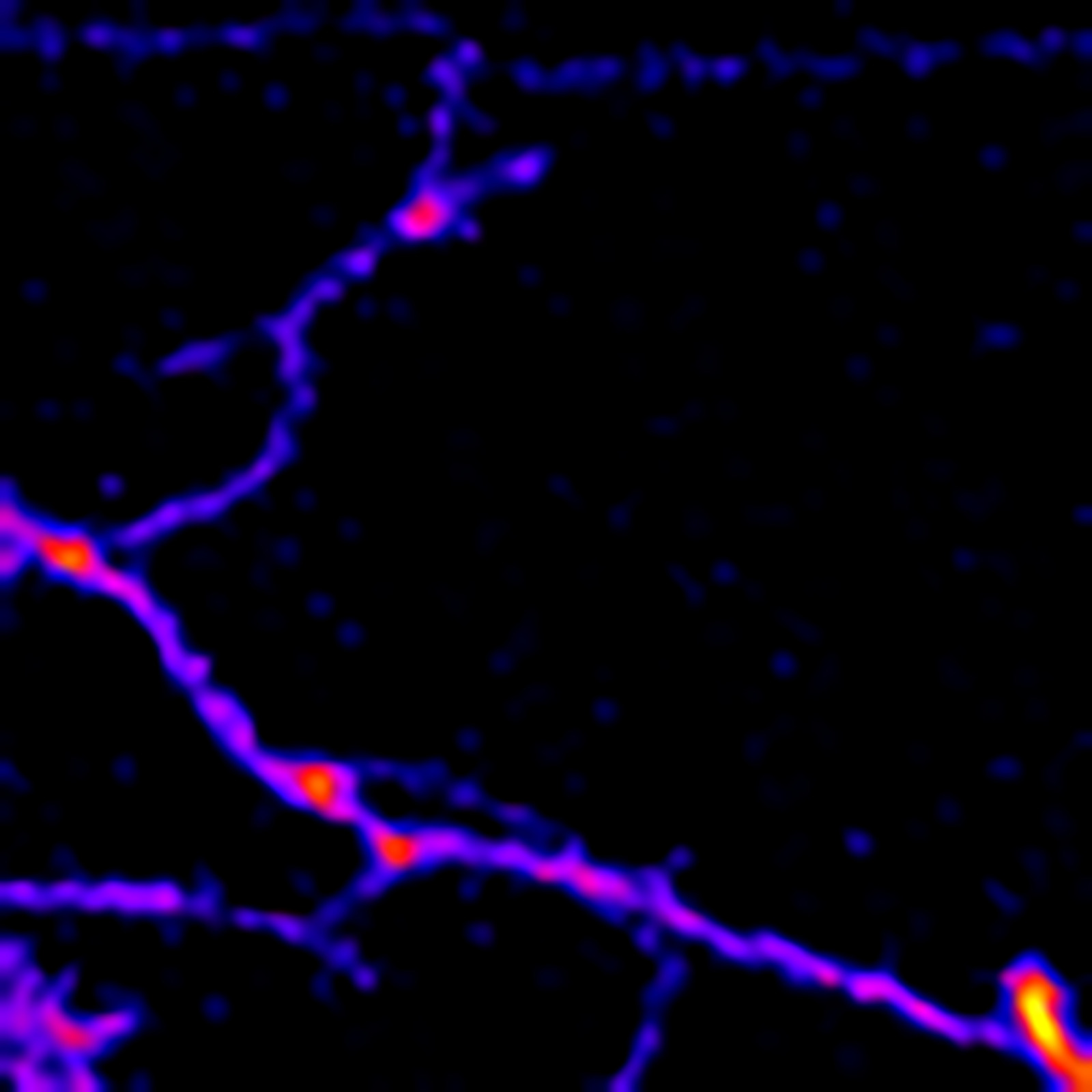Principles and applications of fluorescence microscopy
The use of fluorescence microscopy (wide field, confocal, multiphoton, and now superresolution) in combination with genetically encoded fluorescence probes comprise a powerful set of scientific tools to study live cells. However, surprising little practical and theoretical training in such methods exists within standard curricula, particular at the early stage of training (Masters or Doctorate level). This course offers to cover basic optics principles necessary to understand the origin of microscope resolution and design. Participants will get hands-on experience implementing simple optical configurations to illustrate these fundamental principles. Subsequently, participants will perform experiments on state-of-the-art imaging equipment provided by microscope vendors.
Lectures will cover, in depth, the principle behind traditional high resolution imaging methods such as confocal, multi-photon, and the recently developed super-resolutions methods. Students will also learn about fundamental properties of synthetic and genetically encoded fluorescence indicators used for cellular morphology imaging and signaling recording. Finally guest lectures will demonstrate applications of some of the discussed methodologies.
This course is intended for Master’s students and international PhD students who expect to be using advanced live cell fluorescence microscopy for future studies.
Master 2 students from partner Universities (Sorbonne University and University of Paris Cité) MUST NOT register online and must submit their registration request DIRECTLY to contacts in charge of their university course. These students have free access to the course.
All other students must register online and pay their registration fees.
Poster

